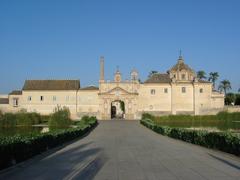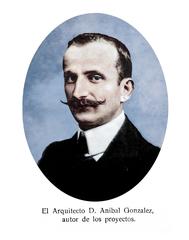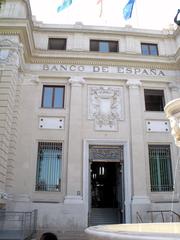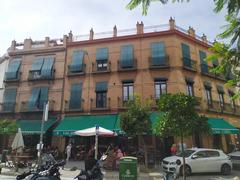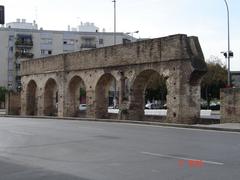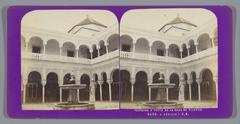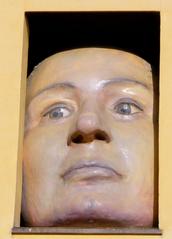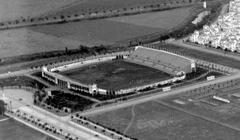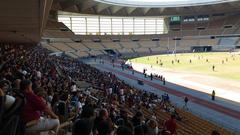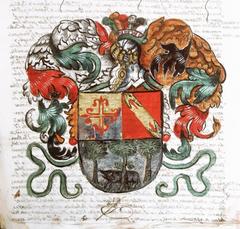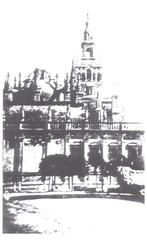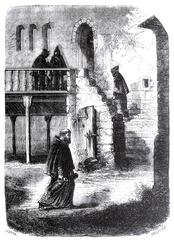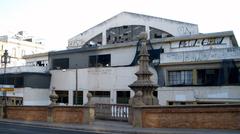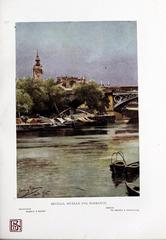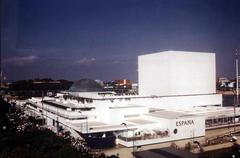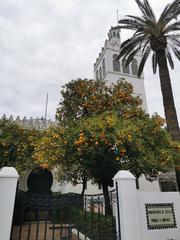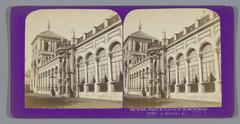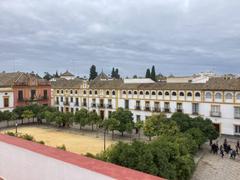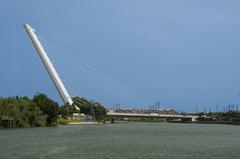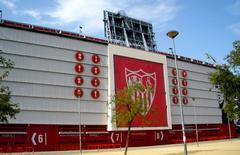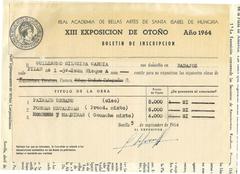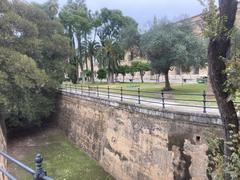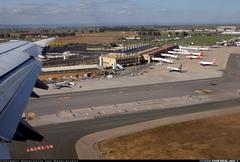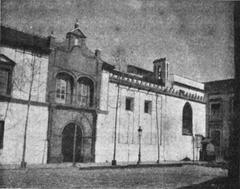Antiguo Monasterio de San Jerónimo de Buenavista: Visiting Hours, Tickets, and Complete Guide for Seville
Date: 14/06/2025
Introduction
Nestled in Seville’s northern San Jerónimo district, the Antiguo Monasterio de San Jerónimo de Buenavista stands as a living testament to Andalusia’s remarkable religious, architectural, and cultural heritage. Founded in 1414 by Don Diego Martínez de Medina, this former Hieronymite monastery has evolved from a secluded spiritual retreat into a vibrant civic and cultural center. Its enduring legacy is reflected in a unique blend of Gothic, Mudéjar, Renaissance, and Baroque architectural styles, as well as its continued role in community life. This detailed guide provides everything you need to plan your visit—history, architectural highlights, practical visitor information, accessibility, travel tips, and nearby attractions—ensuring a rewarding experience at one of Seville’s most treasured landmarks. (Ayuntamiento de Sevilla, sevillasecreta.co)
Table of Contents
- Historical Overview
- Architectural Features
- Visitor Information
- Visitor Experience
- Frequently Asked Questions (FAQs)
- Visuals and Media Recommendations
- Conclusion and Call to Action
- References and Further Reading
Historical Overview
Foundation and Early Development
The Antiguo Monasterio de San Jerónimo de Buenavista was established in 1414 by Don Diego Martínez de Medina, originally as a retreat for the Hieronymite order. Positioned outside Seville’s medieval walls, it offered a tranquil environment conducive to contemplation and scholarly pursuits. The monastery’s early construction reflects the Mudéjar and Gothic styles prevalent in Andalusia at that time, with later Renaissance enhancements under royal patronage (es.wikipedia.org, sevillasecreta.co).
Royal Patronage and Social Influence
Throughout the 15th and 16th centuries, the monastery benefited from the patronage of Spanish monarchs such as Ferdinand the Catholic, Charles I, and Philip II. This support enabled significant expansion, including the establishment of a leading library and early printing press. The monastery played a central role in Seville’s religious, intellectual, and social life, serving both as a center for theological scholarship and as a burial site for prominent families (visitarsevilla.com).
Intellectual and Artistic Contributions
The monastery became known for its rich collection of books, early printed works, and artworks by renowned artists such as Juan de Espinal. While many original pieces have been relocated, surviving artworks and architectural details continue to reflect its cultural importance (museumspedia.net).
Decline and Secularization
In the 19th century, the Desamortización de Mendizábal (Ecclesiastical Confiscations) led to the secularization and partial abandonment of the monastery. It suffered damage and neglect, serving variously as a factory, residence, and municipal property (spottinghistory.com).
Modern Restoration and Civic Role
Declared a Historical-Artistic Monument in 1964, the monastery was acquired by Seville’s City Council in 1984. Extensive restoration in the 21st century stabilized the structure and adapted spaces for cultural activities, exhibitions, and community events (en.wikipedia.org).
Architectural Features
Monastic Plan and Spaces
The complex is organized around a traditional cloister—rectangular and arcaded, ideal for monastic contemplation. The church, attached to the cloister, is built in the late Gothic style with a single nave and ribbed vaulting. The spatial organization includes the chapter house, refectory, monks’ cells, and serene gardens (Patrimonio de Sevilla).
Artistic Elements and Decorative Programs
- Gothic and Renaissance Influences: Pointed arches, ribbed vaults, and vegetal-motif capitals mark the Gothic origins, while Renaissance enhancements introduced classical pilasters, cornices, and medallions (Arte en Sevilla).
- Baroque Additions: 17th and 18th-century renovations brought Baroque altarpieces, stucco work, and polychrome sculpture.
- Mudéjar Tilework: Glazed azulejos and artesonado ceilings showcase the Mudéjar tradition (Andalucía Información).
Restoration and Conservation
Major restoration campaigns in the late 20th and early 21st centuries focused on structural reinforcement, cleaning and consolidation of decorative elements, and adapting the building for civic use (Junta de Andalucía).
Notable Artistic Works and Gardens
While many original artworks are now in the Museo de Bellas Artes de Sevilla, fragments of the Baroque choir, mural paintings, and decorative stuccos remain in situ. The restored gardens offer geometric parterres, citrus trees, and shaded walkways—a living example of historic Andalusian landscape design (Sevilla City Council).
Visitor Information
Visiting Hours and Tickets
- Tuesday–Sunday: 10:00 AM – 6:00 PM (last entry 5:30 PM)
- Closed: Mondays and certain public holidays
- Admission: €5 adults; €3 seniors (65+); free for children under 12; discounts for students and Seville residents
- Guided Tours: Available on weekends and by reservation (Spanish and selected English tours)
- Booking: Tickets available onsite and online via the official website. Online booking is recommended during peak periods.
Accessibility
The monastery is wheelchair accessible with ramps and adapted restrooms. Some historic sections have uneven surfaces; assistance is available upon request.
Getting There
- Address: Calle San Jerónimo, San Jerónimo district, Seville
- Public Transport: Bus lines C1, C2, 3, and 27 stop nearby (Tussam Seville)
- Parking: Limited street parking; public transport is recommended
Travel Tips and Nearby Attractions
- Best Time: Early morning or late afternoon for quieter visits and the best natural light
- Nearby: Parque del Alamillo, La Barqueta Bridge, Centro Andaluz de Arte Contemporáneo (Monasterio de la Cartuja), local cafés and tapas bars
Events and Community Engagement
The monastery serves as a cultural hub, hosting classical and flamenco concerts, art exhibitions, open-air cinema, and educational workshops for families. Check the official website or social media for current event schedules (Diario de Sevilla).
Visitor Experience
Site Layout and Navigation
Visitors enter through landscaped gardens, leading to the main cloister and church. Bilingual signage and interpretive panels provide historical and architectural context. Printed brochures and QR codes allow for self-guided tours.
Atmosphere and Facilities
The site offers a tranquil atmosphere with birdsong and the scent of orange blossoms, a peaceful contrast to Seville’s bustling center. Facilities include clean restrooms, a gift shop, and a café with garden seating. Free Wi-Fi and lockers are available; strollers are permitted.
Educational Value
Interpretive programs highlight the monastery’s foundation, evolution, and artistic heritage. Temporary exhibitions and family workshops deepen the visitor experience, especially on weekends.
Practical Tips
- Dress modestly out of respect for the religious site.
- Photography is allowed in most areas; no flash or tripods inside the church.
- Advance booking is recommended during festivals or peak times.
- Children under 12 enter free and family-friendly activities are offered on weekends.
Frequently Asked Questions (FAQs)
Q: What are the visiting hours?
A: Tuesday–Sunday, 10:00 AM–6:00 PM; closed Mondays and some holidays.
Q: How much is admission?
A: €5 adults; €3 seniors; free for children under 12; discounts for students and residents.
Q: Are guided tours available?
A: Yes, on weekends and by reservation; some are available in English.
Q: Is the site wheelchair accessible?
A: Yes, with ramps and adapted facilities; some uneven surfaces may require assistance.
Q: Can I take photographs?
A: Yes, except flash and tripods in the church.
Q: Are children welcome?
A: Absolutely; family-friendly activities are available.
Visuals and Media Recommendations
For an enhanced visit, seek out:
- High-resolution images of the Gothic-Mudéjar church (alt text: “Antiguo Monasterio de San Jerónimo de Buenavista Gothic-Mudejar church exterior”)
- Photos of the cloister courtyard (“Serene cloister courtyard at Antiguo Monasterio de San Jerónimo de Buenavista”)
- Springtime garden views with jacaranda trees
- Maps of the complex and San Jerónimo district
Visual materials are available on the official website and local tourism portals.
Conclusion and Call to Action
The Antiguo Monasterio de San Jerónimo de Buenavista offers an unparalleled glimpse into Seville’s religious, artistic, and architectural history. Its peaceful gardens, restored cloisters, and vibrant cultural programming make it a must-see for both locals and travelers. For the latest updates, ticket discounts, and event news, download the Audiala app and follow Seville’s official tourism channels. Plan your visit and experience the timeless beauty of this remarkable monument.
References and Further Reading
- This is a sample text. (Ayuntamiento de Sevilla)
- This is a sample text. (sevillasecreta.co)
- This is a sample text. (museumspedia.net)
- This is a sample text. (spottinghistory.com)
- This is a sample text. (en.wikipedia.org)
- This is a sample text. (Patrimonio de Sevilla)
- This is a sample text. (Sevilla Monumental)
- This is a sample text. (Arte en Sevilla)
- This is a sample text. (Andalucía Información)
- This is a sample text. (Junta de Andalucía)
- This is a sample text. (Diario de Sevilla)
- This is a sample text. (Turismo de Sevilla)
- This is a sample text. (San Jerónimo Buenavista)
